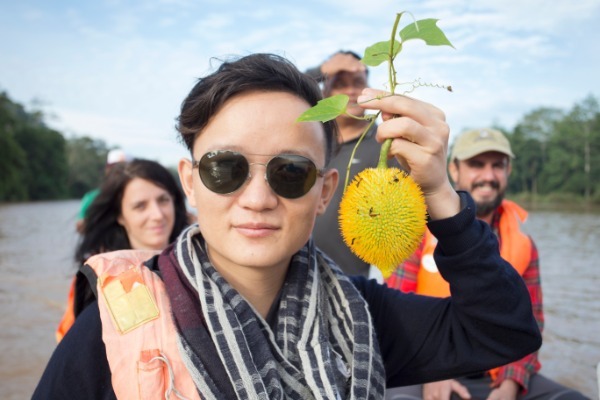A fruitful endeavor
An intrepid explorer tackles rainforests and dangerous wildlife to help people better understand nature's succulent bounty, Wang Qian reports.


[Photo provided to China Daily]
A blossoming interest
In 2008, before his obsession with fruit began to blossom, he went to Singapore to study for his bachelor's degree in precision engineering. He was amazed by the local tropical plants.
Each weekend he would visit botanical gardens or nature reserves and the first steps of his fruitful journey began at a local roadside durian stall one year later.
"It is not me who finds fruit, it is the fruit that finds me," Yang says.
Durian, the fruit belonging to the genus Durio, has about 35 recognized species with more than 600 named varieties, mainly in Thailand, Malaysia and Indonesia. As a keen durian lover, Yang has tasted more than 100 types, of which the wild Sukang variety, with its red flesh, has impressed him most.
"When my friend found one for me and stored it in his refrigerator, I booked the flight ticket from Singapore to Malaysia immediately. It was an unforgettable experience when I flew there and opened it with my own hands," Yang recalls.
In a quest that has taken him around the world, Yang spent more than 500,000 yuan ($74,049) in his search for exotic fruits between 2009 to 2015.
Following his graduation in 2012, Yang became an engineer in Singapore. The following year a record-setting haze settled over the city-state, caused by slash-and-burn land clearances in Sumatra, Indonesia, to the west of Singapore.
"It was heartbreaking to see so many species dying as a result of the man-made fires," he says. It was then that he decided to quit his job and devote himself to plant conservation.
"Human understanding and exploration of nature is quite limited and remains shallow. It is easy to destroy a species, but from an engineer's point of view, it is incredibly difficult to re-create one," says Yang. "As an engineer, my contribution can be ignored, but as a fruit hunter, I think I can make a difference."
He started to help the South China Botanical Garden of the Chinese Academy of Sciences join in the plant exchange program with a research institute from Southeast Asia. He is also working with the academy's Chinese Field Herbarium on the Chinese naming of regional, tropical plants. So far, he has given 2,000-odd plants Chinese names.




































